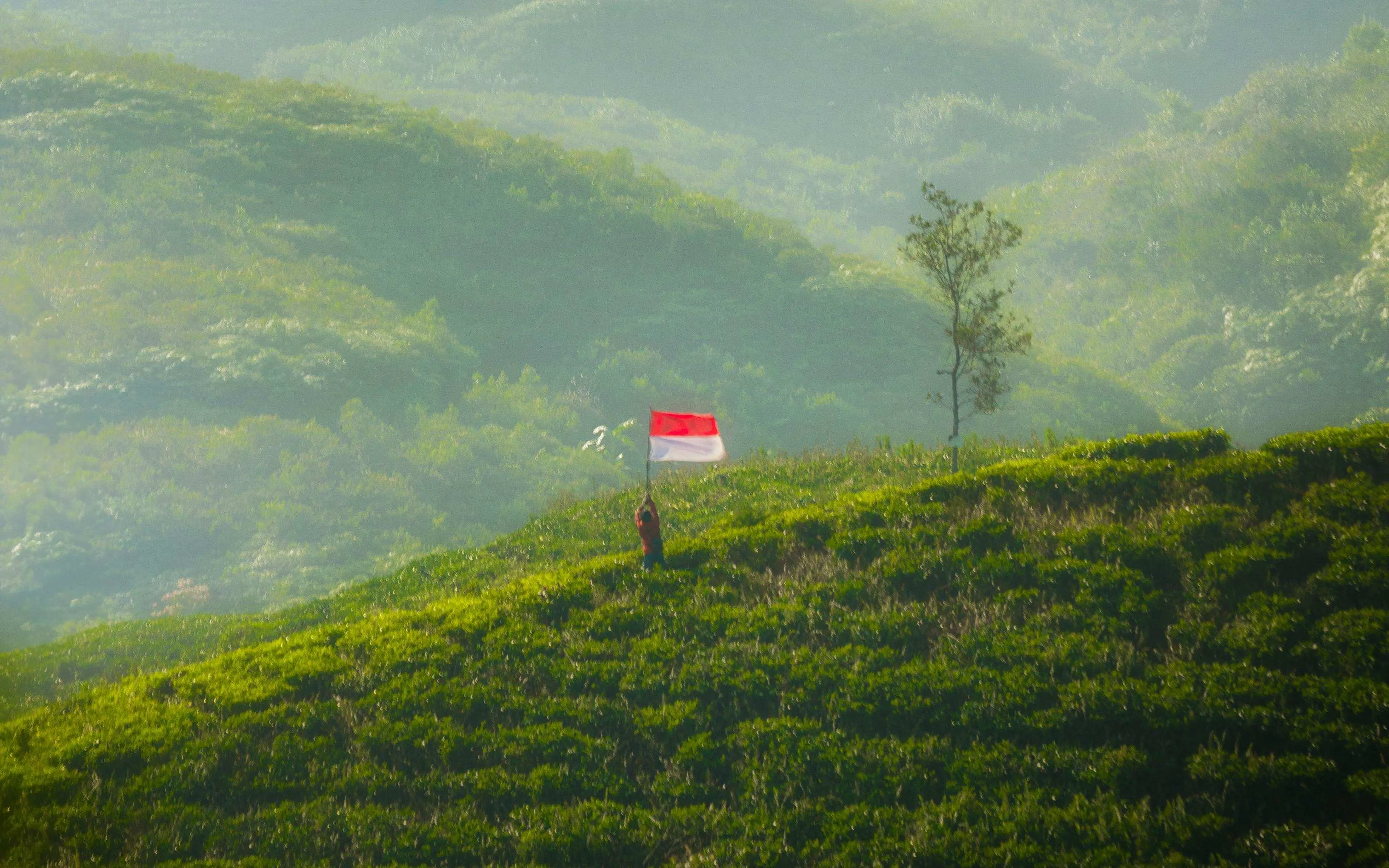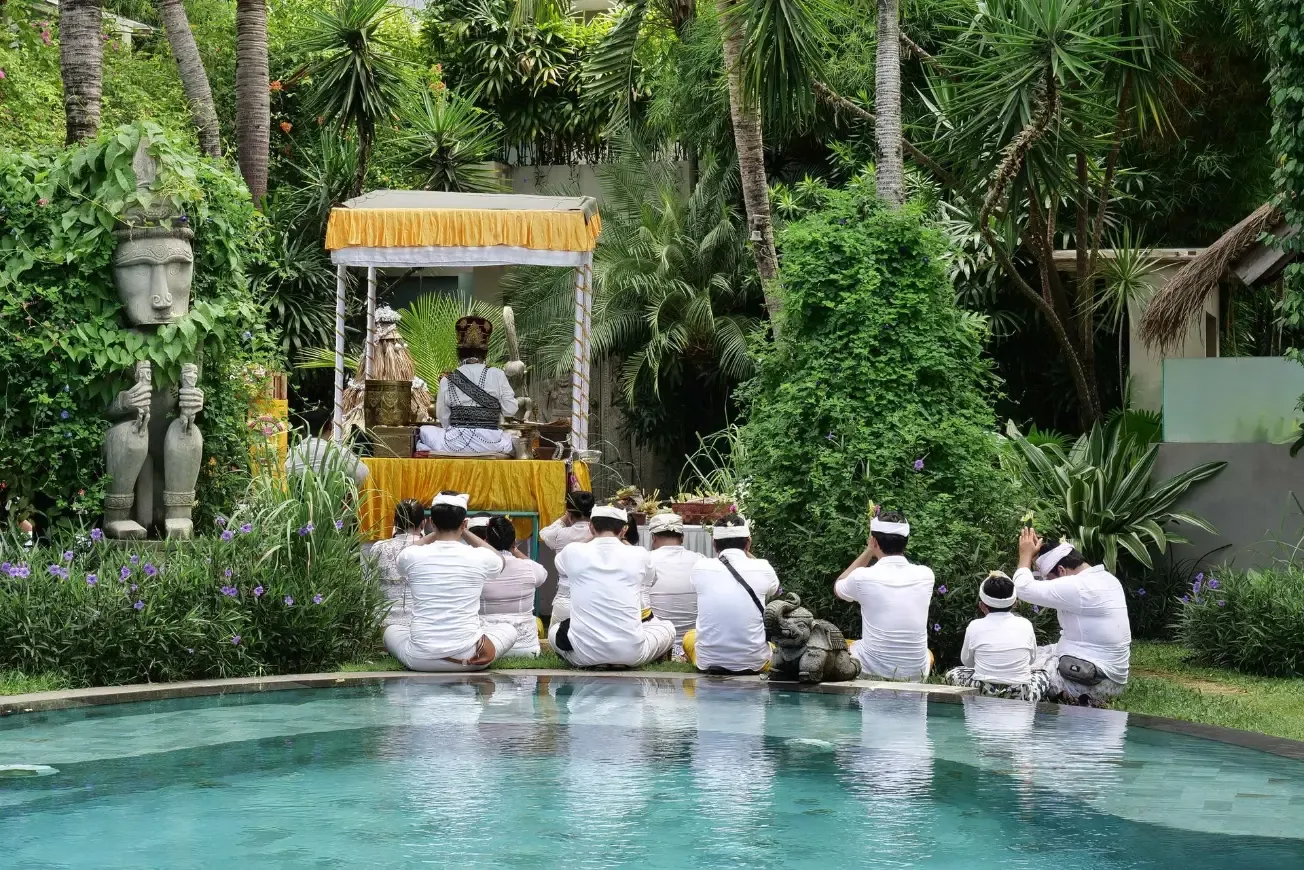The History and Significance of Balinese Offerings
by Alexa Genoyer
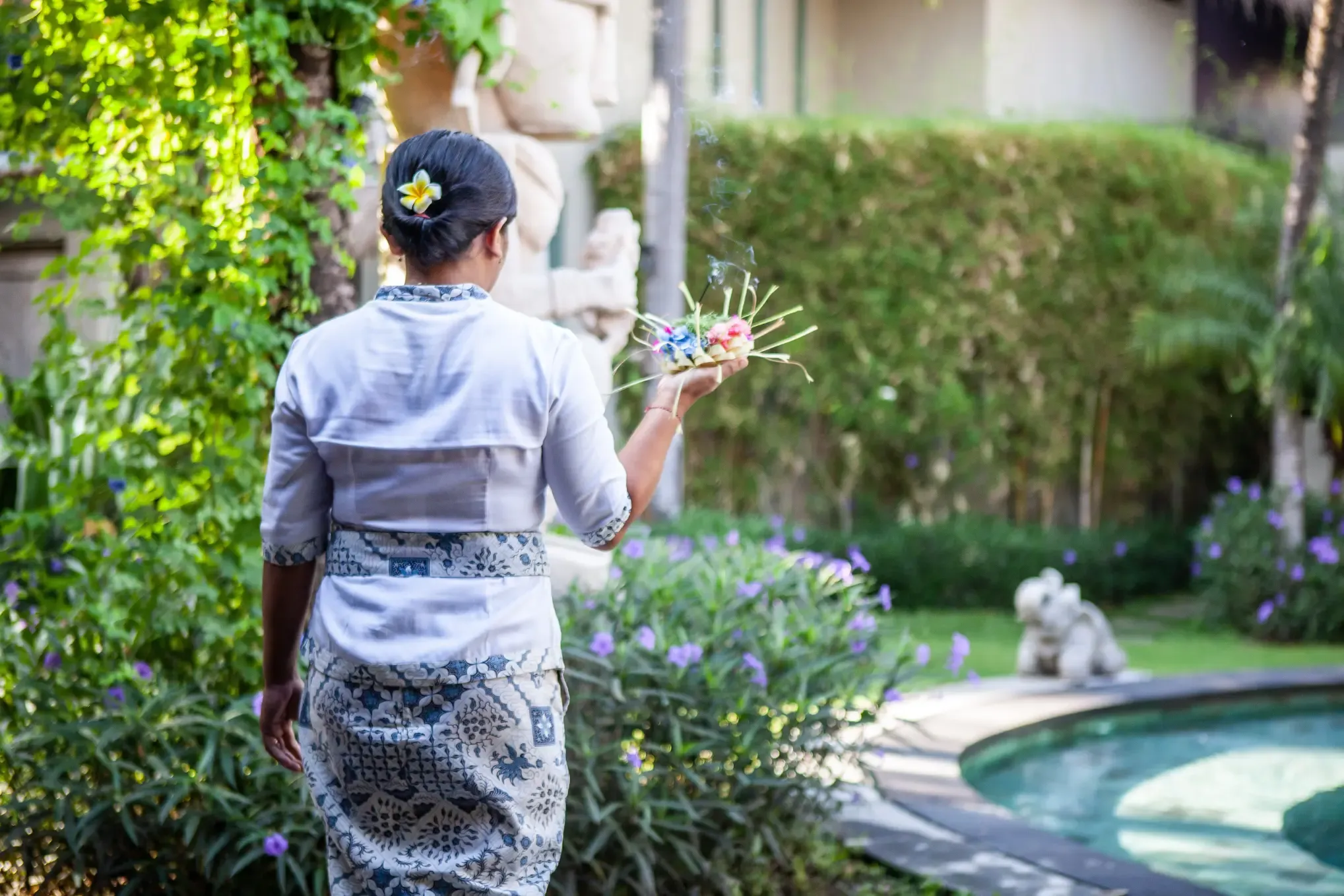
Fragrant flowers arranged in palm-leaf trays. Incense rising gently into the morning air. A ritual repeated endlessly across Bali, weaving the spiritual into the everyday.
Balinese offerings, known as canang sari, are more than simple gestures of devotion. They are living symbols of gratitude, balance, and connection—anchoring daily life to a rhythm that feels timeless. To witness them is to glimpse the heart of Balinese culture, where spirituality and artistry move as one.
Roots in Tradition
The practice of making offerings stretches back centuries, rooted in Hindu-Balinese philosophy. Each element has meaning: flowers for sincerity, rice for sustenance, betel leaves for health, and incense to carry prayers skyward. Together, they form a dialogue between humans, the divine, and nature.
These offerings are not only placed in temples but also in homes, shops, and even on motorbikes—reminders that devotion belongs not only in sacred spaces, but also in the flow of daily life.
The Components of a Canang and Their Meanings
A canang sari may look simple at first glance, but each part carries intention:
- Palm Leaf Tray (ceper) – The base, crafted from young coconut or palm leaves, represents the world itself: a vessel that holds life, devotion, and balance.
- Betel Leaf & Lime (sirih and kapur) – Placed first as a foundation, they symbolize honesty, harmony, and the union of masculine and feminine energies.
- Rice (beras) – The essence of sustenance and prosperity, reminding us of gratitude for food and the cycle of life.
- Flowers (bunga) – Each color faces a direction, dedicated to a specific deity:
- White (East) for Iswara – purity and sincerity
- Red (South) for Brahma – strength and energy
- Yellow (West) for Mahadeva – wisdom and prosperity
- Blue/Green (North) for Vishnu – harmony and balance
- White (East) for Iswara – purity and sincerity
- Sari (Fragrance) – Often in the form of incense, symbolizing prayers and gratitude rising toward the divine.
Together, these elements form a spiritual dialogue: honoring the gods, giving thanks for blessings, and seeking balance between the seen and unseen worlds.
The Balance of the Seen and Unseen
At the heart of every canang is the principle of Tri Hita Karana—the harmony between humanity, nature, and the spiritual. By placing offerings each morning, the Balinese seek to restore balance, inviting blessings while honoring the unseen forces that shape existence.
This daily ritual reflects a worldview where gratitude is not reserved for special occasions. It is woven into each sunrise, each small act of care, each fragrant tray placed with intention.
Offerings as an Art Form
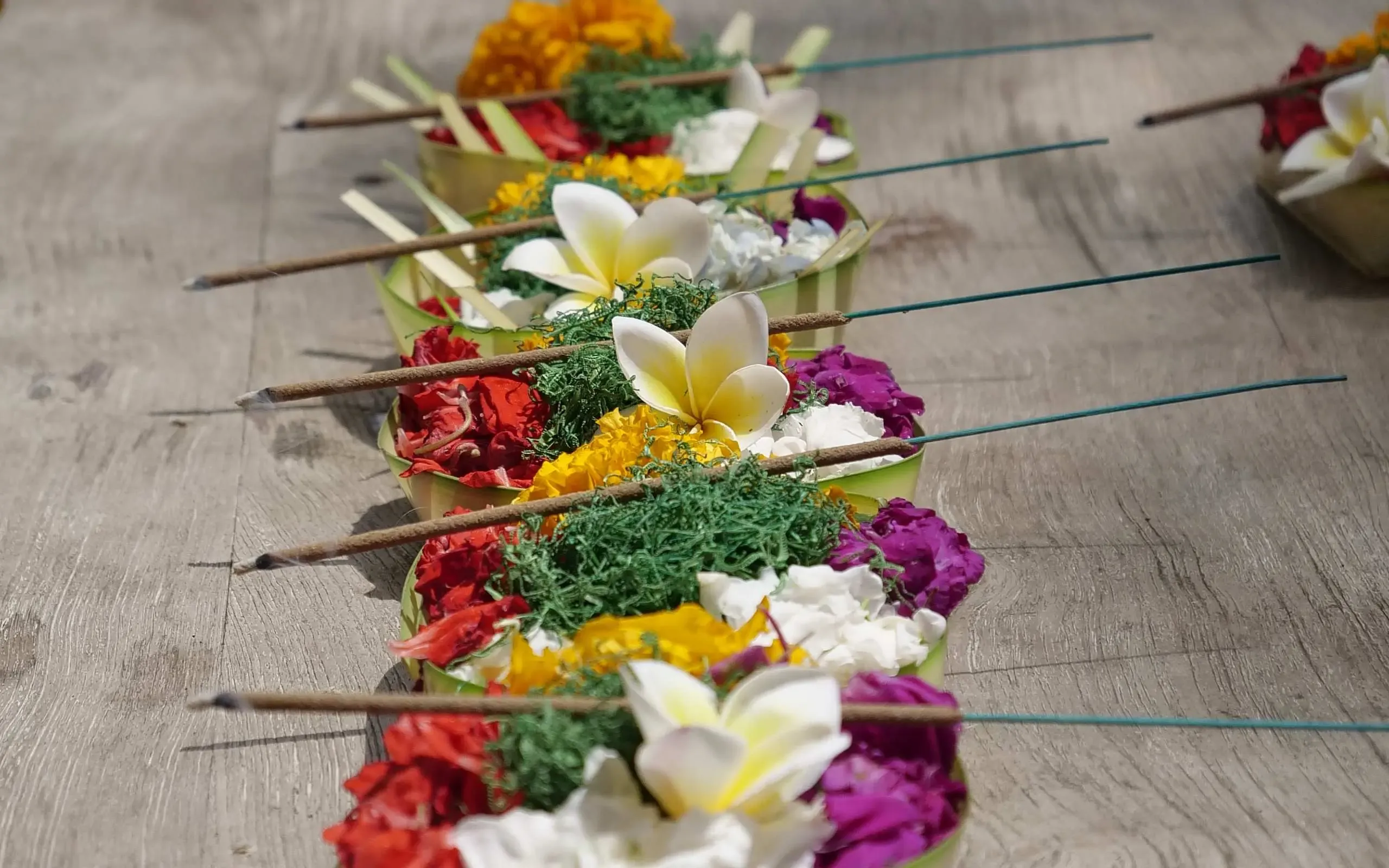
Beyond their spiritual role, offerings are a celebration of creativity. Women, often from a young age, learn the intricate art of folding palm leaves and arranging blossoms in symmetrical patterns. What might seem like a fleeting act is also a canvas of color and grace—each canang a miniature masterpiece that lasts only until the wind scatters its petals.
The impermanence is the point. By releasing beauty to the elements, the Balinese affirm that nothing is ever truly wasted when offered with sincerity.
The Ceremony Within the Everyday
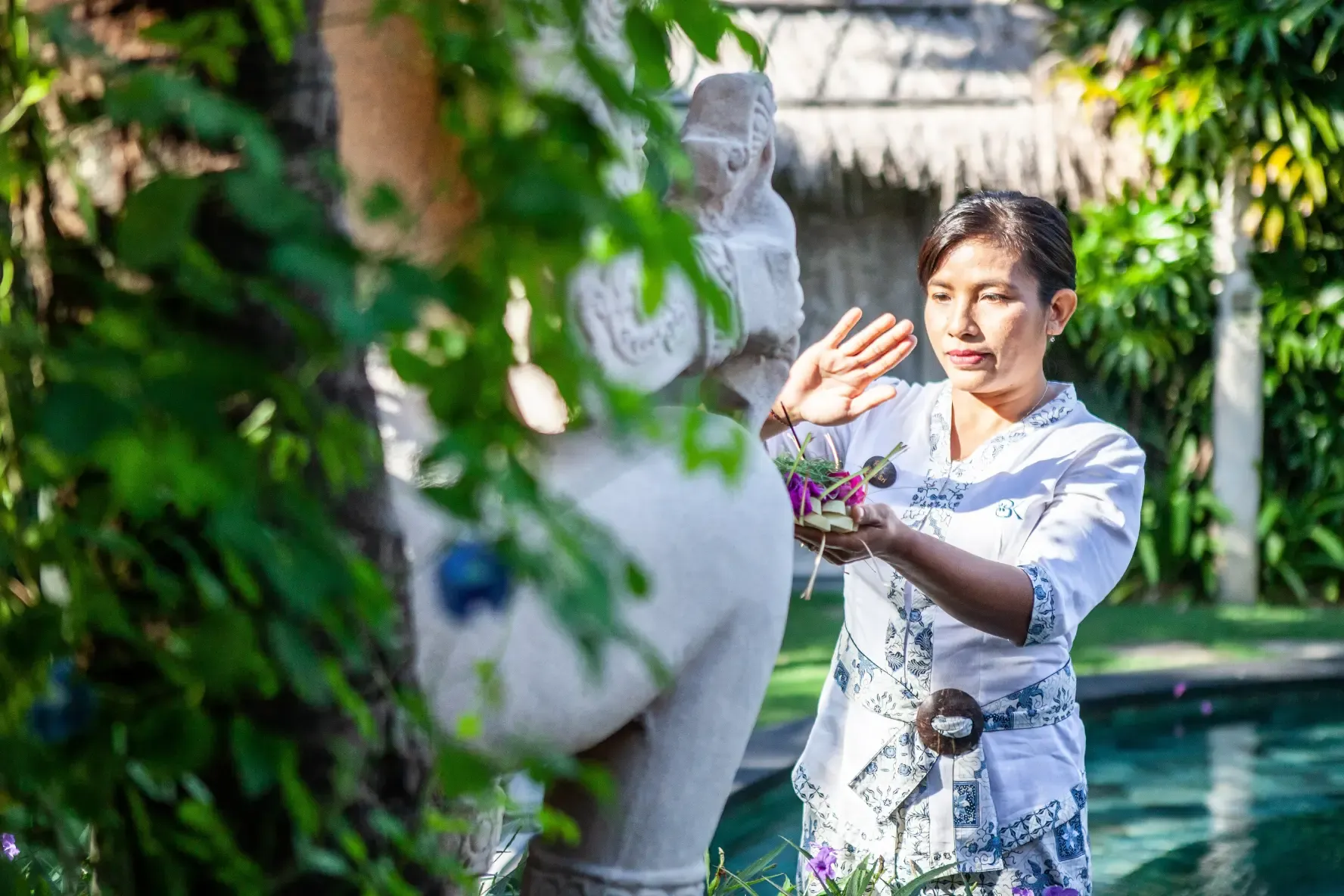
Offerings accompany nearly every ceremony in Bali—from weddings and temple festivals to new business openings. Yet they also exist in the humblest corners: a doorstep, a rice field, a car dashboard. In these small moments, spirituality becomes accessible, grounding the day with reverence.
Experiencing Offerings at Blue Karma Secrets Hotels
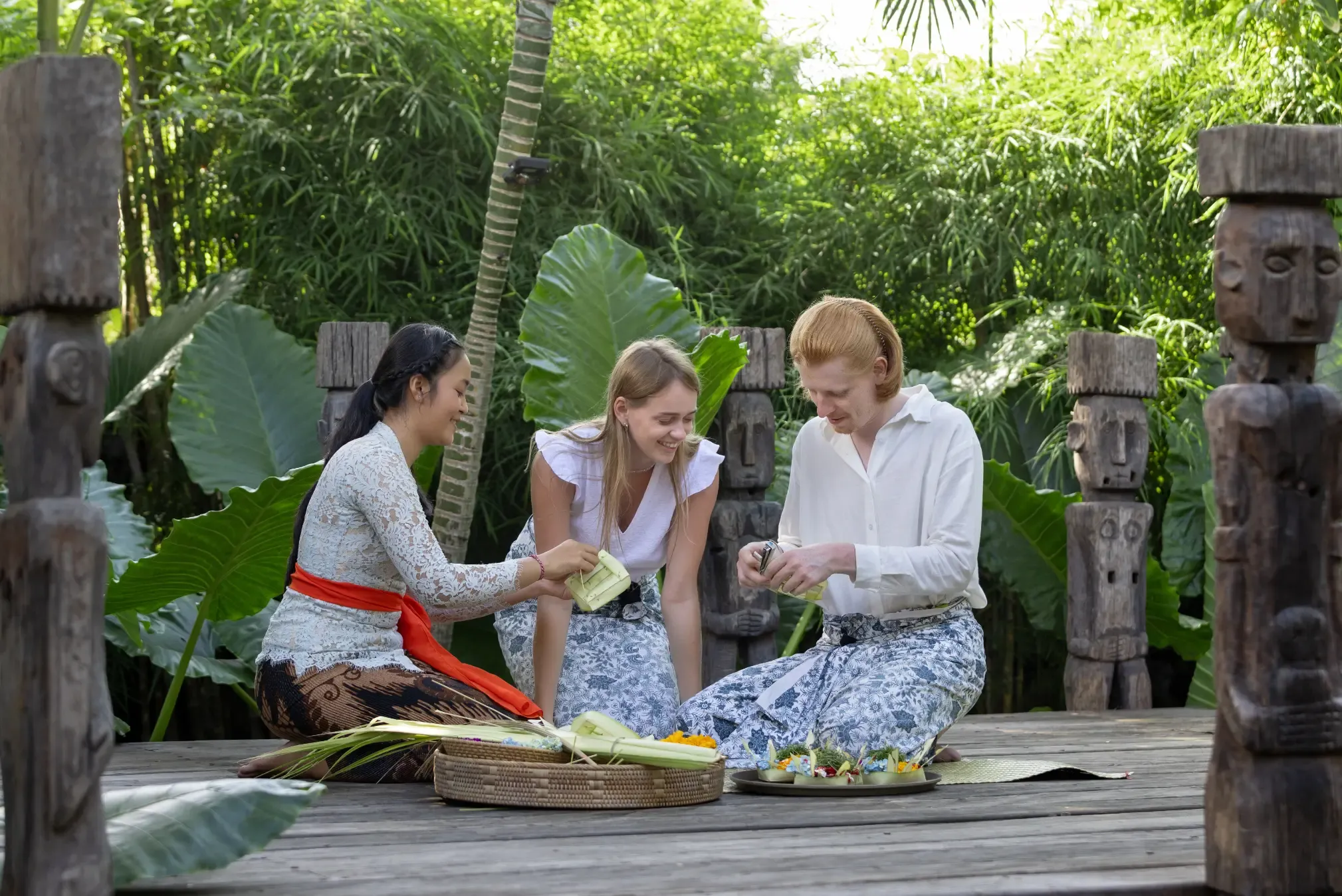
In Blue Karma Secrets, we believe cultural connection deepens every journey. That’s why each of our retreats - whether in Ubud, Seminyak, or Umalas - offers guests the chance to join our canang classes. Guided by local staff, you’ll learn how to weave palm leaves, choose symbolic flowers, and place your own offering with prayer.
It is not about mastering technique, but about feeling the quiet intention that lies within this ritual. Many guests describe the practice as meditative, a bridge between cultural discovery and inner reflection.
A Living Legacy
Balinese offerings are not relics of the past—they are vibrant, evolving traditions carried forward with devotion. In their beauty and simplicity lies a universal truth: gratitude sustains us, balance restores us, and ritual gives meaning to the everyday.
To witness a Balinese woman placing her morning canang is to see a culture where spirituality is not separate from life, but inseparable from it.
And perhaps, in folding a palm leaf yourself in Blue Karma Secrets, you will feel how devotion can be both timeless and personal—an offering of heart, made in the present moment.
